The Architecture of Happiness was a trite book published in the mid-2000s and mercifully forgotten. Our Happy Life: Architecture and Well-Being in the Age of Emotional Capitalism, a new exhibition at the Canadian Centre for Architecture (CCA) in Montreal, isn’t nearly as snappily titled, but as an enterprise, it is far more probing and curious. Curated by Francesco Garutti, the show explores how, after the 2008 financial crash, the “happiness industry”—comprising government initiatives, economic indices, and city rankings— hijacked virtually every facet of contemporary life.
Metropolis’s Samuel Medina spoke to Garutti about happiness as a social project, the “cold intimacy” of Instagram, and architecture’s new spaces of meaning.

SAMUEL MEDINA: A curator once told me that he had read every popular book about happiness there is. He said that it helps him do his job—communicating with the public—better. What sparked your interest in the subject?
FRANCESCO GARUTTI: You can go as far back as Greek philosophy [laughs]. I had a chat with the artist Simon Fujiwara— I was very intrigued by his The Happy Museum (2016) at the Berlin Biennale. The discussion was coming from his artistic practice; we were not talking about architecture at all. But afterward I was just bumping into this word—the idea—everywhere and in every context. I began finding “happiness” in literature and in journalism, for example, these city rankings and Gallup polls. What is happiness? It is a set of values. It is a political agenda. I thought to myself, “Let’s pose to architects some questions of happiness.”
SM: Happiness has become a metric—“a set of values,” as you say—with transnational currency. It now enjoys the imprimatur of political science and sociological research. When did that happen?
この記事は Metropolis Magazine の May 2019 版に掲載されています。
7 日間の Magzter GOLD 無料トライアルを開始して、何千もの厳選されたプレミアム ストーリー、9,000 以上の雑誌や新聞にアクセスしてください。
すでに購読者です ? サインイン
この記事は Metropolis Magazine の May 2019 版に掲載されています。
7 日間の Magzter GOLD 無料トライアルを開始して、何千もの厳選されたプレミアム ストーリー、9,000 以上の雑誌や新聞にアクセスしてください。
すでに購読者です? サインイン
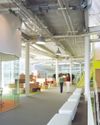
No New Buildings
The energy already embodied in the built environment is a precious unnatural resource. It’s time to start treating it like one.

The Circular Office
Major manufacturers are exploring every avenue to close the loop on workplace furniture.

Signs of Life
Designers, curators, and entrepreneurs are scrambling to make sense of motherhood in a culture that’s often hostile to it.
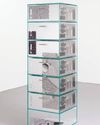
Interspecies Ethic
In probing the relationship between humans and nature, two major exhibitions question the very foundations of design practice.
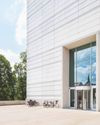
Building on Brand
The Bauhaus turned 100 this year, and a crop of museum buildings sprang up for the celebration.
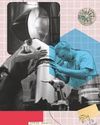
Building for Tomorrow, Today
Radical change in the building industry is desperately needed. And it cannot happen without the building trades.
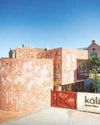
Strength from Within
Maggie’s Centres, the service-focused cancer support network, eschews clinical design to arm patients in their fight for life.

Next-Level Living
The availability of attractive, hospitality-grade products on the market means everyday consumers can live the high life at home.
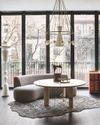
Mi Casa, Su Casa
Casa Perfect creates a memorable shopping experience in lavish private homes.

Enter The Culinarium
AvroKO imagines the future of residential amenities—where convenience, comfort, and sustainability meet.